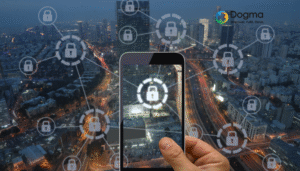Determining what needs to be monitored and measured, when, by whom, the methods to be used, and when the results will be evaluated requires a structured approach. Here’s a step-by-step process to help you establish this:
1. Define Objectives and Scope
Objectives: Clearly define the goals and objectives of your information security program. These could be related to compliance, risk management, incident response, or overall security posture.
Scope: Determine the scope of your monitoring and measurement activities. This includes identifying the critical assets, systems, processes, and data that need to be protected.
2. Identify Key Areas for Monitoring
Risk Areas: Identify high-risk areas that need continuous monitoring, such as sensitive data repositories, critical systems, and network perimeters.
Compliance Requirements: Consider regulatory and compliance requirements that mandate specific monitoring activities.
Incident History: Analyze past security incidents to identify recurring issues or vulnerabilities that need ongoing monitoring.
3. Define Metrics and KPIs
Key Performance Indicators (KPIs): Develop KPIs that align with your objectives. Examples include number of security incidents, time to detect and respond to incidents, number of vulnerabilities found, and compliance rates.
Metrics: Develop specific metrics to measure these KPIs. Ensure they are SMART (Specific, Measurable, Achievable, Relevant, Time-bound).
4. Determine Monitoring Frequency
Continuous Monitoring: For critical systems and high-risk areas, implement continuous monitoring to detect and respond to threats in real-time.
Periodic Monitoring: For less critical areas, define periodic monitoring intervals (daily, weekly, monthly, quarterly) based on risk levels and compliance requirements.
Ad-hoc Monitoring: Perform ad-hoc monitoring in response to specific threats or incidents.
5. Assign Responsibilities
Roles and Responsibilities: Define who will be responsible for monitoring and measuring different aspects of the ISMS. This could include IT staff, security teams, compliance officers, and external auditors.
Accountability: Ensure accountability by clearly documenting roles and responsibilities in your security policies and procedures.
6. Select Monitoring Methods and Tools
Tools: Choose appropriate tools and technologies for monitoring, such as SIEM (Security Information and Event Management) systems, intrusion detection systems, vulnerability scanners, and endpoint protection solutions.
Methods: Define the methods for data collection, analysis, and reporting. This could include log analysis, network traffic analysis, vulnerability assessments, and penetration testing.
7. Establish Evaluation Procedures
Regular Reviews: Set up a schedule for regular reviews and evaluations of the monitoring results. This could be monthly, quarterly, or annually depending on the criticality of the metrics.
Incident Reviews: Conduct post-incident reviews and root cause analyses to evaluate the effectiveness of your incident response processes.
Management Reviews: Hold regular management reviews to assess overall ISMS performance and make strategic decisions.
8. Documentation and Reporting
Documentation: Maintain detailed documentation of your monitoring activities, including what is monitored, how it is monitored, and who is responsible.
Reporting: Develop regular reports for different stakeholders (e.g., technical teams, management, auditors) to communicate the results of monitoring activities and any identified issues.
9. Continuous Improvement
Feedback Loops: Establish feedback loops to ensure continuous improvement. Use the results of your evaluations to refine monitoring activities and improve security measures.
Adjustments: Make necessary adjustments to monitoring frequency, methods, tools, and responsibilities based on the evaluation results and evolving threat landscape.
Example Scenario
What Needs to Be Monitored:
· Critical Systems: Servers, databases, network infrastructure.
· Sensitive Data: Customer data, intellectual property.
· User Activities: Access logs, privileged account activities.
When:
· Continuous: Network traffic, critical system health.
· Daily: Log analysis, security events.
· Weekly/Monthly: Vulnerability scans, compliance checks.
By Whom:
· IT Staff: Daily log analysis, system health checks.
· Security Team: Continuous monitoring, incident response.
· Compliance Officer: Periodic compliance audits.
Methods to Be Used:
· Tools: SIEM, intrusion detection systems, vulnerability scanners.
· Techniques: Log analysis, network traffic analysis, penetration testing.
Evaluation Schedule:
· Monthly: Internal audit reports, security incidents review.
· Quarterly: Management review meetings, compliance status reports.
· Annually: External audits, comprehensive risk assessments.
By following this structured approach, you can effectively determine and implement a robust monitoring and measurement framework for your ISMS.



